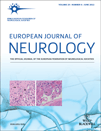Voxel-based morphometry in patients with obsessive-compulsive behaviors in behavioral variant frontotemporal dementia
Abstract
Background and purpose: Obsessions and compulsive (OC) behaviors are a frequent feature of behavioral variant frontotemporal dementia (bvFTD), but their structural correlates have not been definitively established.
Methods: Patients with bvFTD presenting to the Mayo Clinic Alzheimer’s Disease Research Center were recruited. Each patient’s caregiver was given the Yale-Brown Obsessive-Compulsive scale (YBOCS) to document the type and presence of OC behaviors and to rate their severity. All subjects underwent standardized magnetic resonance imaging (MRI) that was evaluated using voxel-based morphometry (VBM). Seventeen patients with bvFTD were recruited, and 11 were included in the study and compared with 11 age- and gender-matched controls. Six were excluded for lack of MRI at the time of survey or a pre-existing neurodegenerative condition.
Results: Nine of the 11 reported OC behaviors, with the most frequent compulsions being checking, hoarding, ordering/arranging, repeating rituals, and cleaning. In the VBM analysis, total YBOCS score correlated with gray matter loss in the bilateral globus pallidus, left putamen, and in the lateral temporal lobe, particularly the left middle and inferior temporal gyri (P < 0.001 uncorrected for multiple comparisons).
Conclusions: Obsessive-compulsive behaviors were frequent among these patients. The correlation with basal ganglia atrophy may point to involvement of frontal subcortical neuronal networks. Left lateral temporal lobe volume loss probably reflects the number of MAPT mutation patients included but also provides additional data implicating temporal lobe involvement in OC behaviors.




